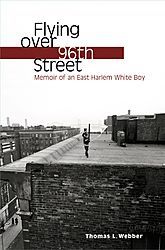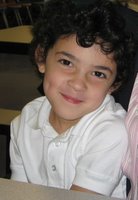Beyond FEATURES: HYPHEN on Hines Ward and the Multiracial Dream
 Another new site just came across the radar during a search for a Sports Illustrated for Kids article (yes, I have a teen-age son) about Hines Ward of the Pittsburgh Steelers. Ward is Korean and African American, and his story became popular with the press even before he made the game-winning touchdown in Super Bowl XL earlier this year. A February trip back to Korea with his Korean mother received a great deal of attention, too. From what I’ve read, all this attention did nothing but good: Biracial children in Korea and their families have traditionally been ostracized. By publicly acknowledging and discussing what he and his mother endured…and learned…during his childhood, Ward has given biracial children in Korea and the U.S. a role model worthy of as much attention and respect as they—and the press—opt to shower upon him.
Another new site just came across the radar during a search for a Sports Illustrated for Kids article (yes, I have a teen-age son) about Hines Ward of the Pittsburgh Steelers. Ward is Korean and African American, and his story became popular with the press even before he made the game-winning touchdown in Super Bowl XL earlier this year. A February trip back to Korea with his Korean mother received a great deal of attention, too. From what I’ve read, all this attention did nothing but good: Biracial children in Korea and their families have traditionally been ostracized. By publicly acknowledging and discussing what he and his mother endured…and learned…during his childhood, Ward has given biracial children in Korea and the U.S. a role model worthy of as much attention and respect as they—and the press—opt to shower upon him.The October 2006 Sports Illustrated for Kids story, “This is Who I am,” apparently isn’t available on-line. I’m glad I read it and encouraged my son to read it, too. The article allowed Ward to tell his story in his own words. The anecdote I’ll remember most is the one of Ward as a fourth-grader who was teased and never felt accepted by white kids, black kids, or Asian kids and who scrunched down in the car one morning at drop-off so no one at school would see him with his mother. His mother realized he was embarrassed to be seen with her and started crying. “After that,” Ward stated, “all the name-calling just went in one ear and out the other.”
The blog of Hyphen magazine offered its own take on Ward’s appeal in this February 17 post, “Hines Ward and the Multiracial Dream.” The post raised concerns about the attention celebrities like Ward get, concerns that are voiced by many: “Sometimes…it seems that people enthusiastically embrace all things multiracial and multicultural just as a way to show how modern and with it they are.” In the comments to the post, one visitor suggested that spotlighting celebrities like Ward, who are in “positions to inspire,” can only be a good thing. I agree. I do believe, however, that it’s important for publications like Hyphen magazine and its blog to question the often-stereotypical portrayals of Americans whose identities and families cross racial and/or cultural boundaries. The Hyphen blog is full of stories that reflect concerns shared by many Americans of Asian descent.
For other resources on such issues, check out Hyphen’s comprehensive list of community links to sites like Thailinks and Asian Pacific Fund.
Photo © Associated Press














